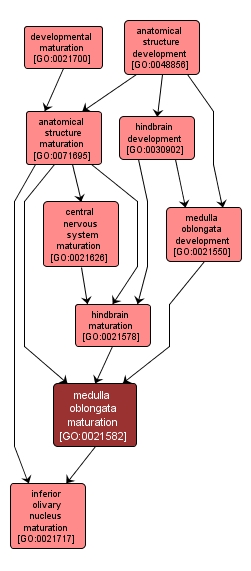| Desc: |
A developmental process, independent of morphogenetic (shape) change, that is required for the medulla oblongata to attain its fully functional state. The medulla oblongata lies directly above the spinal cord and controls vital autonomic functions such as digestion, breathing and the control of heart rate. |














